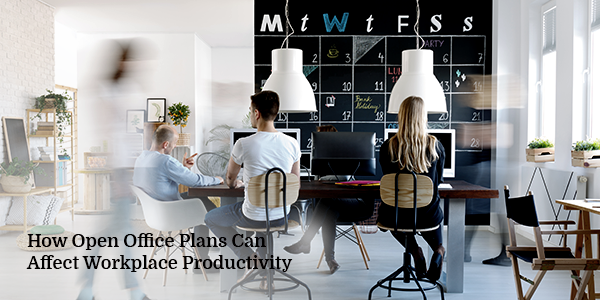Silicon Valley is known to be ground zero of forward-thinking companies that have been building their empires in an attempt to change the world. This is where office spaces that are designed with a modern touch are the norm, which generally consists of an open space layout where teams are usually grouped without partitions to encourage creativity and collaboration.
Today’s open office layout is a stark contrast to what a corporate office such as a Cebu recruitment agency frequently looked like just a decade ago: offices separated by walls with employees seemingly caged and secluded in each of them. While both the cubicle and open space layouts usually define a specific company culture, each has an entirely different purpose in line with an organization’s objectives.
The trend of the open plan layout became a popular part of the corporate culture when the need for higher efficiency through collaboration became a priority. This kind of no-boundaries workspace also allowed managers to check on the members of their team anytime they wish without going through much trouble.
But despite the logic behind this making a lot of sense, there are downsides. Research suggests employees working in an open space layout are more susceptible to distractions, which destroys their focus and decreases their productivity anywhere between 15% to 28%. To make matters worse, they are also twice as likely to get ill in open environments. But despite these negative figures, 70% of US companies use this design.
This begs the question, what are the benefits and drawbacks we can get from this kind of office layout anyway?
Benefits
The primary purpose of an open office layout is to maximize space by using a large open floor plan without having to build separate offices for employees. There are positive effects from this kind of workplace set up, which leads us to these wonderful benefits.
1. It is cost-effective.
Running your company’s operations across an open office plan costs less than installing traditional cubicles or private offices. With less overhead expenses, you can be sure each member of your workforce can utilize the needed space and equipment to conduct their business. Just think of how much you can save from not having to install cubicle walls and furnish individual office rooms.
This trend is actually taking off, with small businesses opting to rent fully-furnished private offices with open space layouts inside dedicated workspace buildings. These kinds of office spaces are equipped with high-speed internet, multifunction scanners, and common areas, with professional cleaning services and free refreshments to boot.
2. You are more attuned to the workplace vibe.
Working in the immediate vicinity as your team will make you more or less involved with what they are discussing among themselves regardless if they are good or bad. The upside here is if you are aware of your team’s concerns, you will have the opportunity to offer advice when needed.
The absence of physical barriers makes it easier for employees to interact with each other on the regular, which also means you can be updated with what’s going on at the office as a whole. Nothing beats being at the top end of the information funnel to help you make decisions when it comes down to it.
3. It encourages collaboration.
One of the most significant benefits of literally breaking down the walls of an office is the increased collaboration among employees. This is what naturally happens when people are working in the same space, sharing ideas and asking for input. While there are online communication tools readily available such as instant messaging apps, you won’t be able to compare them to the ability of humans to interact in person. This can also help forge better professional relationships that lead to improved work performance.
4. It increases productivity.
An open office plan delivers a domino effect of benefits that will eventually reflect on the result of all your employees’ performance.
Drawbacks
As with most things in life, there are disadvantages when working in an open office plan. This doesn’t work for everybody since each employee has a preference when it comes to the working environment.
1. There’s a lack of privacy.
There are a lot of people who value their own and others’ privacy. And if they feel this is being invaded in a workplace setting, they are greatly affected. This will soon reflect on their performance and ultimately their productivity.
Working closely next to several other employees tends to make it tough to engage in private conversations over the phone. And with a lack of barriers also a huge factor, they feel that their superiors are constantly keeping an eye on them, leading to anxiety that may affect their performance.
2. There are many distractions.
Since there are no walls or doors to help keep you focused on the task at hand, distractions may come in any form and from every direction. You will be hearing office chatter happening around you all day, both on the phone and in person. You might even start noticing a few of your co-workers’ habits that annoy you, drawing attention from that task you’re trying to complete.
This may be no different than with cubicles, but walls may still provide a sense of privacy that helps employees have an easier time to focus on their work. With an open office layout, employees are going to be forced to find innovative ways to drown out all the distractions. They may also become more considerate of their co-workers, which helps keep the noise down to a minimum.
3. It can be a health risk.
The absence of cubicles or walls can boost the risk of contagious diseases like the common cold spreading to the surrounding area. If it does spread, it could significantly affect productivity as more employees call in sick.
Open Office Ideas
There may be a few disadvantages in working in an open office layout, but the pros still outnumber the cons. This is the reason more companies utilize this concept since the owners recognize that the possibilities are endless.
To optimize every corner of your space and reap all the benefits while eliminating the drawbacks, here are open office ideas that can work to your advantage.
1. Desk Groups
You can group desks of employees from a particular team, with enough space to allow them to walk around this grouping. This layout is effective in collaboration while being separated from other departments help avoid unnecessary distractions.
2. Private Booth
If you have phone calls that need to be done privately without being overheard by your co-workers, it is a good idea to dedicate a small area that allows employees to take these calls without distracting their co-workers.
3. Improve Design Aesthetics with Functionally Diverse Spaces
Encourage both creativity and productivity by adding diverse designs to break the monotony of the entire room. You can create unique desk groupings along with private spaces that address different needs. You can throw in couches with a reading space for employees who want to take a short break from gruelling hours.
You can take advantage of the open office trend and still reap the benefits without having to worry about its negative effects. Keep in mind; it’s all about execution, so start cultivating creativity while boosting productivity in a modern office.














